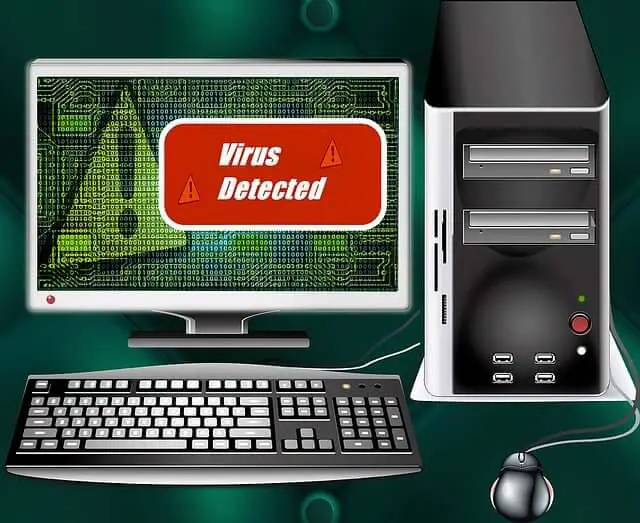In the ever-evolving landscape of cybersecurity, individuals often find themselves navigating through a sea of terms and tools. Today, we delve into the realm of digital defense, pondering the significance of EDR (Endpoint Detection and Response) and antivirus software. As the digital threats become more sophisticated, one might wonder: Do I need both EDR and antivirus?
Yes, to ensure maximum security in your environment use both EDR and Antivirus. An Antivirus filters common known viruses preemptively, reducing noise for the EDR manager. However, Antivirus lacks the context and broader view of virus impact on company infrastructure. EDR excels in handling complex and advanced non-common malware attacks. Combine these tools for a comprehensive defense strategy.
In a previous blog post, we have discussed how EDR can replace an old Antivirus technologies that only relay on signature based detection and doesn’t have wider view on the network. However, in this blog post we will show you how the new generation of Antivirus will still contribute to a better and secure environement. If you want to learn more about what are the main differences between an EDR and an Antivirus and why it is a good idea to have them both, then just keep reading.
How Antivirus Identifies and Eliminates Known Threats ?
Malware detection techniques are multiple and each antivirus uses one or multiple techniques to identify known threats. Here is a list of the most known techniques:
Signature-Based Detection: A Digital Fingerprint Approach
In the realm of antivirus protection, signature-based detection acts as a digital fingerprint approach. Picture each piece of malware as having a distinct fingerprint, and antivirus software plays the role of a diligent detective equipped with a vast database of these fingerprints. This database consists of known malware signatures – unique patterns or characteristics that differentiate one threat from another. As you download a file or open an attachment, the antivirus scrutinizes it, searching for these telltale signs. If a match is found, the antivirus swiftly takes action, which may involve quarantining or outright deletion of the identified threat.
Heuristic Analysis: Anticipating Suspicious Behavior
In the dynamic landscape of cybersecurity, emerging threats without a pre-existing signature pose a challenge. Heuristic analysis steps in to address this gap. Antivirus programs leverage heuristic algorithms to assess the behavior of files and programs. If a file exhibits behavior commonly associated with malware, even in the absence of an exact signature match, the antivirus identifies it as a potential threat. This proactive approach allows antivirus solutions to anticipate and neutralize novel threats that haven’t yet been cataloged in the signature database.
Behavioral Monitoring: Keeping an Eagle Eye on Activities
Antivirus programs go beyond static analysis by actively monitoring the behavior of files in real-time. Behavioral monitoring involves tracking the actions of programs and files as they execute on your system. If a file begins to demonstrate malicious behavior during its execution – such as unauthorized attempts to modify system files or replicate itself – the antivirus responds with an immediate alert and implements preventive measures. This dynamic, real-time monitoring enhances the antivirus’s ability to identify and thwart threats as they unfold.
Cloud-Based Detection: Collective Security Intelligence
The modern digital landscape thrives on connectivity, and antivirus programs leverage cloud-based detection to bolster their capabilities. In this collaborative approach, when one user encounters a new threat, information about it is rapidly shared with a centralized cloud database. This collective intelligence allows antivirus programs to stay abreast of emerging threats almost instantaneously, providing a swift and coordinated response across the user community. Cloud-based detection ensures that the antivirus is not operating in isolation but benefits from the insights gained collectively from the user community.
In essence, the intricate interplay of signature-based detection, heuristic analysis, and behavioral monitoring forms a multi-layered defense system. While signature-based detection relies on historical knowledge, heuristic analysis anticipates potential threats, and behavioral monitoring offers real-time protection. When combined with the power of cloud-based detection, these components create a formidable arsenal, reinforcing the antivirus’s role as a vigilant guardian in the digital realm.
What are the limitations of an Antivirus ?
In the ever-evolving landscape of cybersecurity, antivirus software stands as a stalwart defender against known threats. However, it is essential to acknowledge the limitations inherent in these digital guardians. One of the primary constraints lies in the reliance on signature-based detection. Antivirus programs operate by comparing files and activities against a database of known malware signatures, essentially treating each threat as a distinct digital fingerprint. While effective against well-established threats, this approach falters when confronted with new, sophisticated malware that lacks a predefined signature.
Heuristic analysis, another linchpin in the antivirus arsenal, introduces a proactive element by assessing the behavior of files and programs. Yet, it too grapples with limitations. Heuristics may produce false positives, flagging benign programs as potential threats based on behavior that mimics malicious activity. Balancing sensitivity to detect new threats with precision to avoid false alarms remains a perpetual challenge.
Behavioral monitoring, a real-time surveillance mechanism, represents a critical evolution in antivirus capabilities. However, this approach is not foolproof. Malware developers continually refine their tactics, creating stealthier strains that can operate undetected by behavioral analysis. Some advanced threats can manipulate their behavior to evade detection, exploiting vulnerabilities in the antivirus’s monitoring algorithms.
Furthermore, the concept of ‘zero-day vulnerabilities’ adds another layer to the antivirus dilemma. These vulnerabilities are exploited by attackers before developers can create and distribute patches or signatures. Antivirus solutions, reliant on historical knowledge, may not be equipped to combat threats exploiting these novel vulnerabilities, leaving a critical gap in protection until a security update is available.
The diversity of digital landscapes and the multitude of devices and platforms exacerbate the challenge. Antivirus programs may struggle to provide uniform protection across different operating systems, especially as cyber threats increasingly target vulnerabilities specific to certain platforms. Compatibility issues and resource-intensive scans can also hinder the performance of devices, leading to user frustration and potential gaps in security.
Moreover, the rise of polymorphic malware, which can change its code to evade signature-based detection, poses a formidable challenge. Antivirus solutions may struggle to keep pace with these shape-shifting threats, emphasizing the need for a more adaptive and dynamic defense strategy.
The limitations extend to the human factor as well. Antivirus effectiveness relies on regular updates to its signature database. Users who neglect or delay these updates expose themselves to heightened risks. Additionally, user behavior plays a crucial role; social engineering tactics that manipulate users into taking actions, such as clicking on malicious links, can bypass antivirus defenses.
How EDR identifies and Eliminate Threats ?
Endpoint Detection and Response (EDR) emerges as a dynamic force, offering a nuanced approach to identifying and neutralizing threats. Let’s delve into the mechanisms that empower EDR, demystifying its role in safeguarding digital environments.
Continuous Monitoring: A Real-Time Sentinel
At the core of EDR’s efficacy lies its ability to provide continuous monitoring of endpoints. Unlike traditional antivirus solutions that rely on static signature databases, EDR takes a proactive stance by scrutinizing activities in real-time. This vigilant surveillance extends beyond mere file analysis, encompassing the behavior of processes and applications as they unfold on the endpoint. This real-time visibility allows EDR to detect anomalies, unusual patterns, and suspicious activities that may signify a potential threat.
Behavioral Analysis: Understanding Intentions
Behavioral analysis stands as a linchpin in EDR’s arsenal. Instead of relying solely on known signatures, EDR evaluates the behavior of files and processes to identify potential threats. By establishing a baseline of normal behavior for each endpoint, EDR can swiftly detect deviations that may indicate malicious intent. This adaptive approach allows EDR to recognize novel threats, including those that may evade traditional signature-based detection.
Threat Hunting: Unveiling the Stealthy Adversary
EDR goes beyond passive detection; it actively engages in threat hunting. This involves skilled cybersecurity professionals leveraging the capabilities of EDR to proactively search for indicators of compromise within the network. Threat hunting is a dynamic process that seeks to unveil hidden threats that may lurk undetected. It empowers security teams to take a proactive stance, identifying and eliminating potential threats before they escalate.
Incident Response: A Swift and Informed Reaction
In the unfortunate event of a security incident, EDR shines in its incident response capabilities. EDR provides detailed insights into the nature and scope of an attack, facilitating a swift and informed reaction. Security teams can trace the timeline of events, understand the tactics employed by the adversary, and take precise actions to contain and eradicate the threat. This level of visibility is crucial in minimizing the impact of a security incident and preventing future occurrences.
Integration with SIEM: Strengthening Defenses
EDR is not an isolated guardian but thrives in collaboration, especially with Security Information and Event Management (SIEM) systems. Integration with SIEM enhances EDR’s capabilities by incorporating broader insights from the organization’s security landscape. This collaborative approach ensures that EDR is not only analyzing endpoint data but also drawing correlations with broader security events, providing a holistic view that enhances threat detection and response.
What are the limitations of an EDR ?
Endpoint Detection and Response (EDR) is a potent cybersecurity tool, yet its effectiveness comes with nuanced limitations that demand consideration. EDR relies on behavioral analysis and real-time monitoring, which can sometimes result in false positives. Striking the right balance between sensitivity and precision is crucial to avoid overwhelming security teams with unnecessary alerts, preventing alert fatigue and ensuring a focused response to genuine security incidents.
The resource intensiveness of EDR solutions poses another challenge, impacting the performance of endpoint devices. In environments with resource-constrained devices, finding equilibrium between robust security and optimal system performance becomes imperative. Moreover, the complexity of deploying and managing EDR solutions adds another layer of difficulty. Implementation requires a deep understanding of an organization’s infrastructure, network topology, and security policies. Integrating EDR with existing frameworks, such as Security Information and Event Management (SIEM) systems, demands careful planning and expertise.
The evolving threat landscape introduces a continuous stream of new tactics and techniques employed by adversaries. While EDR excels in detecting known threats and sophisticated attacks, its effectiveness against novel, zero-day threats remains a challenge. EDR solutions may struggle to adapt to threats for which they lack predefined signatures or behavioral patterns, necessitating a constant evolution of threat intelligence.
Additionally, the prevalence of encrypted traffic presents a hurdle for EDR. The growing use of encryption for privacy and security reasons limits EDR’s ability to inspect the content of encrypted data. While efforts are made to enhance techniques like TLS inspection, achieving visibility into encrypted traffic without compromising privacy remains a delicate balance.
Why Both EDR and New Generation Antivirus Matter ?
the coexistence of both Endpoint Detection and Response (EDR) and traditional antivirus solutions is not a redundancy but a strategic necessity. Each plays a distinct yet complementary role in fortifying the digital defenses of an organization.
Antivirus software, with its signature-based detection, acts as a vigilant gatekeeper against known threats. It scans files and activities, comparing them against a database of predefined malware signatures. This proactive approach allows antivirus solutions to swiftly identify and eliminate well-known viruses, worms, trojans, and other malicious entities before they can wreak havoc on an organization’s network. The preventive nature of antivirus makes it a crucial first line of defense, effectively filtering out common threats and reducing the attack surface.
On the other hand, EDR takes a more dynamic and proactive stance, focusing on the detection and response to advanced and targeted threats. EDR goes beyond signature-based detection, leveraging behavioral analysis and real-time monitoring. It observes the behavior of processes and applications on endpoints, scrutinizing for anomalies and suspicious activities. This real-time visibility allows EDR to detect threats that may go unnoticed by traditional antivirus solutions. Moreover, EDR provides detailed insights into the nature and scope of security incidents, enabling a swift and informed response to mitigate potential risks.
The synergy between EDR and antivirus is evident in their ability to address different facets of the cybersecurity landscape. Antivirus excels in preventing and eliminating known threats, acting as a robust barrier against common malware. Its signature-based detection efficiently identifies and halts attacks that have been encountered and cataloged before. Meanwhile, EDR steps into the realm of the unknown, actively hunting for novel threats and providing an adaptive defense against sophisticated attacks that may circumvent traditional antivirus measures.
The integration of both EDR and antivirus is essential for a comprehensive defense strategy. Antivirus solutions set the foundation by filtering out the noise of known threats, allowing EDR to focus on the more intricate, advanced, and potentially harmful adversaries. This collaboration ensures a multi-layered approach, where the strengths of one complement the limitations of the other.
In practical terms, deploying both EDR and antivirus is not a matter of redundancy but a strategic imperative. The combination provides a robust security posture that safeguards against a broad spectrum of cyber threats. As the threat landscape continues to evolve, having a dual-layered defense mechanism becomes increasingly crucial. Organizations that invest in both EDR and antivirus not only fortify their digital perimeters but also demonstrate a proactive commitment to staying ahead of the ever-changing tactics employed by cyber adversaries. In a cybersecurity landscape characterized by diversity and complexity, the symbiotic relationship between EDR and antivirus is the key to maintaining a resilient and adaptive defense.
Real-world Examples: Instances Where Dual Protection Shines
To better understand the need befind having both technologies in your environement, a real life scenarios examples is a good think to have in mind. Consider a situation involving a zero-day attack, where a cybercriminal exploits a previously unknown vulnerability in widely used software. In this case, EDR’s strength lies in its ability to detect unusual activities and behaviors associated with the zero-day exploit through continuous monitoring and real-time analysis. Meanwhile, antivirus plays a crucial role in preventive measures by blocking known malware components related to the attack. As the threat becomes identified, antivirus solutions can swiftly deploy updated signatures, enhancing the overall defense against the exploit.
In another real-life scenario involving an Advanced Persistent Threat (APT), a sophisticated adversary launches a prolonged and targeted cyber-espionage campaign against an organization, aiming to remain undetected for an extended period. Here, EDR excels in continuous monitoring and analysis of endpoint activities, detecting subtle signs of APTs, such as unusual data exfiltration patterns or stealthy lateral movement within the network. Antivirus complements EDR by preventing the entry of known malware associated with APTs, providing an initial layer of defense. While APTs often involve advanced tactics, the preventive measures of antivirus can still play a role in thwarting some components of the attack. In these scenarios, the symbiotic relationship between EDR and antivirus proves essential in addressing the multifaceted nature of modern cyber threats.











Post comments (0)